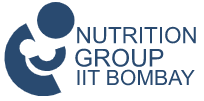LAGAAN was a path-breaking movie. It showed how an underdog can emerge victorious against all odds given unity, focus and right skills or training. It was also path breaking as a communication tool using a one-day cricket narrative, for a pre-independence era story. We could fruitfully use this narrative to plan for a malnutrition free India
Removing child malnutrition is like chasing a target in given overs. This target is the toughest when you are considering tribal girls, less so for the boys, and much less so for non-tribal children. Your strategy will depend on the runs and the asking run rate.
You also face the problem typical of any Indian team – infighting. Each camp looks down upon the other; proponent of exclusive breast feeding versus that of supplementary nutrition versus proponent of early breast feeding or the IUGR or the birth weight! For each expert, his half century is more important than the team’s victory. A wise coach needs to reduce infighting, encourage partnerships, and ensure victory.
The opening batsman is obviously the pregnant mother. If she is a ‘mother at risk’ with low body mass index, height, or age she would go for a duck or just few runs. So, the first thing is to focus on the Body Mass Index (BMI) data of adolescent girls and mothers at risk and initiate corrective action.
But does one give up just because the opener goes out for a duck? We could still salvage the situation by ensuring good weight gain during the pregnancy. A baby weighing above 3 Kgs at birth is almost like scoring half a century. But if it is below 2 Kgs it is a low score. So, the mother’s weight gain, the full ante-natal care, the Tetanus Toxoid injection; all are important. ANC and TT are like ‘free hits’; you lose nothing and have everything to gain!
With a good opening partnership, the team is less stressed but still cannot afford to lower its guard. Early initiation of breastfeeding is crucial. The protective hamper – the ‘colostrum’, given by the nature free of cost, should not be squandered away. The baby must have it within an hour of the childbirth and then be exclusively breast fed for the first six months– no letup in this! This is crucial for the child’s life and cognitive growth.
Next 12 months are a ‘power play’ period when the child is to be given supplementary food. This is usually when the child’s growth could slow down, stagnate or falter. The priority during the power play is to retain wickets – any episode of diarrhea, malaria or missed measles immunization can cause quick ‘loss of wickets’. Best strategy is to get these nursing mothers assemble at the Anganwadi Centre at least once a week for an hour or two, to sensitize them about various precautions to be taken during the ‘power play’. These could range from hand washing, safe excreta disposal, use of ORS, child feeding practices, growth monitoring and so many other measures.
Losing wickets is bad enough, but so is conceding maiden overs. It increases the asking run rate in subsequent overs. So, if the child does not gain weight every month, one has to worry since the weight gain has to be ‘made up’ in subsequent months. It is important therefore that the child keeps gaining weight every month even if at a slow rate. Every single run becomes important particularly when the outfield is slow e.g., high incidence of open defecation, low immunization coverage, de-worming not being done.
De-worming is particularly important. If the children are not de-wormed every six months, then we actually run a programme called the “Integrated Worm Development Scheme” or the IWDS. The worms feel very happy, the hookworms, the roundworms and so on. Their nutritional status improves, that of the child deteriorates.
Three efforts, eliminating open defecation, full immunization and de-worming every six months must go together. Often these happen independently of each other if not in isolation. Where these converge, removing malnutrition becomes easy. Boundaries now come easily through improved feeding practices.
Just as we focus on high burden regions we need to focus on “closest to destination” clusters where the number of malnourished children is low. These can be targeted for creating malnutrition free clusters or ‘green zones’ in every ICDS project free at least from moderate or severe malnutrition. As the green zone starts expanding in size, the programme generates enthusiasm and attracts attention and priority.
Proper child feeding in the 18-36 month through supplementary nutrition is very important if the early gains are to be retained. Often in India, the story of child malnutrition is the story of the ‘collapse of the middle order’. There are states which have not been able to capitalize on their early gains. Yet there are other states who had faced ‘early losses’ but have made things up in the 6–36-month period.
Beyond 36 months, rest is the ‘finishing’ job – something a Captain like Dhoni is good at. One just has to do monitoring of the child growth, see that the supplementary nutrition is available to the child, there are no episodes of diarrhea or malaria and weight gain happens regularly.
Finally, we also need to appreciate that removal of malnutrition is like a 3-match series wasting, stunting and underweight. We must win the series 3-0, nothing more nothing less!
Author
Satish B Agnihotri
Emeritus Fellow CTARA and PI CoE
IIT Bombay, Powai, Mumbai 400076
sbagnihotri@gmail.com
